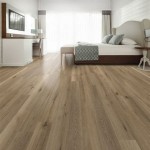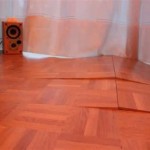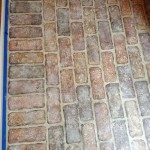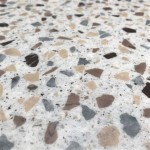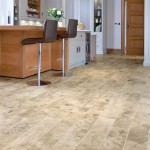When it comes to flooring, there are many options to choose from. Laminate flooring and vinyl are two popular options for people who want to update their space with a stylish, yet budget-friendly, option. Both materials come in a variety of colors and styles, so you are sure to find something that fits your personal taste. In this article, we will explore the similarities and differences between these two materials, as well as the pros and cons of each.
What is Laminate Flooring?
Laminate flooring is a synthetic material made of multiple layers of materials fused together. The top layer is a photographic image of wood, stone, or tile, while the bottom layer is a backing material. The middle layer is a core made of either melamine or fiberboard.
Laminate flooring is very durable and is resistant to scratches, scuffs, and fading. It is also relatively easy to install, making it a great option for DIYers. Laminate flooring is usually less expensive than other types of flooring, such as hardwood and tile.
What is Vinyl Flooring?
Vinyl flooring is a synthetic material made of polyvinyl chloride (PVC). It is available in both sheet and tile form. Vinyl sheet flooring is a continuous sheet of vinyl, while vinyl tile flooring is made up of individual tiles. Vinyl flooring is a popular choice because it is durable and easy to install.
Vinyl flooring is also water-resistant, making it ideal for areas prone to spills or moisture. Additionally, vinyl flooring is relatively inexpensive compared to other types of flooring.
Similarities and Differences
Both laminate flooring and vinyl flooring are budget-friendly options and are available in a variety of colors and styles. Both materials are also relatively easy to install, making them great choices for DIYers. Additionally, both materials are durable and water-resistant, making them ideal for areas prone to spills and moisture.
The main difference between laminate flooring and vinyl flooring is the material. Laminate flooring is made of multiple layers of materials, while vinyl flooring is made of PVC. Additionally, laminate flooring is typically more expensive than vinyl flooring.
Pros and Cons
The pros of laminate flooring include its durability, resistance to scratches and scuffs, ease of installation, and variety of colors and styles. The cons include its tendency to fade over time and its higher price point compared to vinyl flooring.
The pros of vinyl flooring include its affordability, durability, water-resistance, and easy installation. The cons include its lack of versatility and difficulty in replacing individual tiles.
Conclusion
Laminate flooring and vinyl are two popular budget-friendly options for people looking to update their space. Both materials come in a variety of colors and styles, and both are relatively easy to install. Laminate flooring is more durable than vinyl and is resistant to scratches and scuffs, while vinyl is more affordable and water-resistant. Consider the pros and cons of each material to determine which is best for your space.















Related Posts

